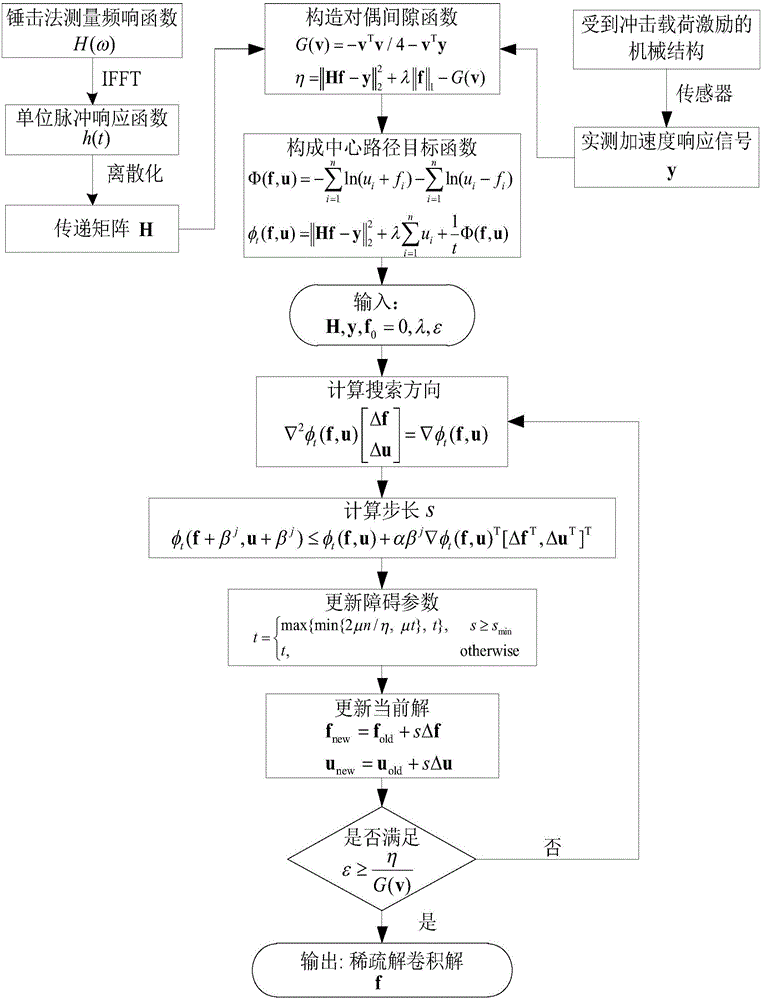Sparse deconvolution method for impact load identification of mechanical structure
A technology of impact load and mechanical structure, applied in special data processing applications, complex mathematical operations, instruments, etc., can solve regularization parameters—difficult to determine the number of basis functions, large transfer matrix condition number, poor numerical stability, etc. Achieve the effects of solving the problem of shock load identification, suppressing amplification, and strong stability
- Summary
- Abstract
- Description
- Claims
- Application Information
AI Technical Summary
Problems solved by technology
Method used
Image
Examples
Embodiment Construction
[0020] Attached below figure 1 -6 and a specific embodiment to further describe the present invention, it should be emphasized that the following description is only exemplary, and the application object of the present invention is not limited to the following examples.
[0021] In one embodiment, the present invention discloses a sparse deconvolution method for impact load identification of mechanical structures, the method comprising the following steps:
[0022] S100, measuring the frequency response function between the mechanical structure impact load action point and the mechanical structure response measurement point and calculating the transfer matrix;
[0023] S200, applying an impact load to the mechanical structure and measuring the impact response;
[0024] S300. Constructing a sparse deconvolution convex optimization model based on L1 norm for impact load identification based on steps S100 and S200;
[0025] S400. Solve the sparse deconvolution convex optimizati...
PUM
 Login to View More
Login to View More Abstract
Description
Claims
Application Information
 Login to View More
Login to View More - R&D
- Intellectual Property
- Life Sciences
- Materials
- Tech Scout
- Unparalleled Data Quality
- Higher Quality Content
- 60% Fewer Hallucinations
Browse by: Latest US Patents, China's latest patents, Technical Efficacy Thesaurus, Application Domain, Technology Topic, Popular Technical Reports.
© 2025 PatSnap. All rights reserved.Legal|Privacy policy|Modern Slavery Act Transparency Statement|Sitemap|About US| Contact US: help@patsnap.com



